|
Master
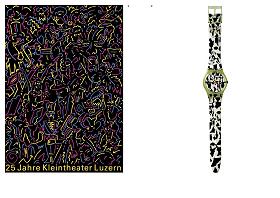
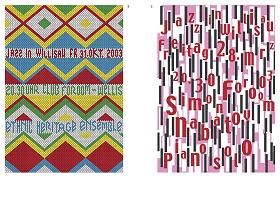
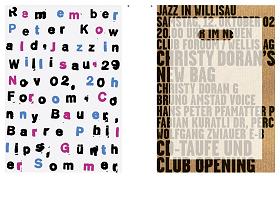
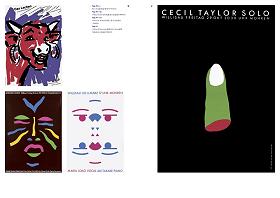
Students
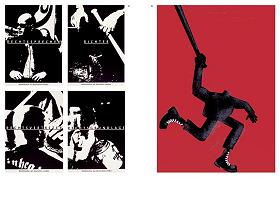
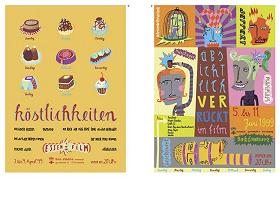
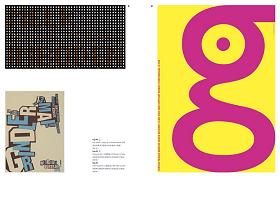
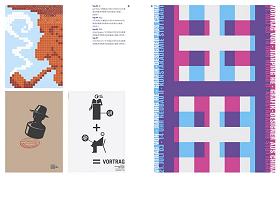
|
Interview with Prof. Niklaus Troxler
1. You are a professor of graphic design, yet to me you are primarily a successful designer. Do you think these are two completely different careers? Which one means more to you? How do you compromise the teaching of graphic design and your own practice of it?
Since I was over 50 years old when I was called to be a professor at
the Public Academy of Art in Stuttgart, it was a great and new
challenge for me. The fact that I became the successor of one of my
biggest idols, Heinz Edelmann, made the entire issue even more
significant. Of course I had held workshops all over the world and had
worked as a guest professor at the University of Kassel, however, this
call evoked a totally different feeling of responsibility in me.
Two main fields of occupation have always characterized my professional
life: graphic design and Jazz. These two activities have always
influenced each other mutually so that the new job as professor
extended my professional day to a quasi tripod. I am of the opinion
that these three different careers continue to influence each other
strongly. This process reveals new possibilities for my students and
myself.
2. During your educational communication with the students, has your work ever been influenced by the younger minds of design? If yes, in which respect is this so? How do you look at such an influence?
It has always been in my interest to follow the development of graphic
design attentively. My design work stays only interesting as long as I
can discover new aspects and hence can continue developing.
Accordingly, it is of vital importance to look ahead. The students are
supposed to respect the old masters, but should not copy them. Above
all, they are supposed to seek new solutions. I want to influence my
students only in the latter aspect. It is my primary objective to teach
an innovative attitude to my students, which is indispensable in
becoming a creative personality, thus excluding epigonic imitation.
3. As an internationally renowned graphic designer, many of your works are regarded as classics. I’m curious about whether the strong individual style in your characteristic works has an influence on the artistic creations of your students. How do you take hold of this influence? If a student emerges with a style very similar to yours, how would you feel and what would you do?
I’m everything else than a dogmatic teacher. I don’t teach any rules.
If there is one, it is the rule that rules are there to be broken. The
students are supposed to develop to being independent and qualified
authors. Of course they have to find the way themselves. I aid them
with advice and criticism. Usually, the students do not imitate or copy
me. If this should be the case, of course I will intervene.
4. With the rapid development of science and technology, it is inevitable that the application of new technologies enter the realm of design. How do you see the relationship between new-tech and the training of traditional basic skills in your teaching?
We have to keep up with permanently changing technology and we have to
keep pace, whether we like it or not. We have to use it for our
purposes. I am not leading a war of faith. However, I always refer to
the older handicraft techniques. The students should experience the
sensuousness of artisanship. Especially at our Academy, traditional
handicrafts can be cultured, since we have workshops for bookbindery,
typography, offset, book printing, silk-screening, photography and
audiovisual media, which are led by excellent caretakers.
5. The idea of Globalization is very popular these days. Is graphic design gradually losing its native character and regional identity? May I know your attitude towards the concept of “nationality” in your design and teaching?
Formerly, more national characteristics were recognizable in graphics.
Today, this is hardly the case anymore. Of course the graphic artists
of the north design a little cooler than their colleagues from the
Mediterranean areas. Of course designers in the Far East use different
symbols from in the West. Yet, design is influenced more by the
personality than by the place of origin. It is one of my aims to
continuously introduce such extraordinary persons to the students. This
is implemented either through guest lectures at our Academy or by
visiting studios during excursions.
6. Speaking of Globalization, I always feel that people today are emphasizing speed more than creativity of design.
How do you understand “speed”?
Today, design is often misunderstood and perceived as form, shell, or
mere decoration. However, good design is always defined by its contents
and idea. Our times are fast moving and communication seems to
permanently demand new trends. This acceleration is developing
unnatural features. It seems that design has to permanently appear new
and fashionable. The question of style is being emphasized, which is
absolutely ludicrous. We should dissociate ourselves from this and find
new ways to achieve justice for the contents.
7. Savignac used to say posters are children on the streets. In Europe, people tend to understand the poster as an art on the street. Then, what do you think of posters being exhibited and kept in museums? How much time and effort will you devote to poster design in your class schedule?
A poster is always intended for the street. It is an extraordinary
medium. No one goes to a street to look at a poster. It is more the
case that rather the posters achieve to surprise the pedestrians, to
catch his attention and to evoke a grin or a smile. It is a nice side
effect when posters advance to become collectibles. Design history is
often documented by the means of posters. On a single level the poster
clearly lays out contents and the translation of an idea.
In my instruction, posters are always a theme. When guest lectures are
coming up or exhibitions have to be announced, my students work out
posters. It is a continuous training and a popular internal
competition.
The students should learn to design according to the medium. The
difference between the media is of imminent importance, for example
designing a book, a website, or a poster requires different criteria.
Every medium has its own characteristics. Doing them justice is the
prime objective of designing.
8. Do you have any specific requirement for design theories in class? What are the books that you usually recommend to your students?
I endeavor to supply my students with as much information as possible
about what is happening in design. I have created my own library, which
the students use actively. I present the newest publications during
class sessions. I have subscriptions of international specialist
journals like "Eye", "Graphis", "Étapes", "Form", and "Idea". These are
shared among the students.
9. How would you feel about the achievements and success of your students?
I hope that the young people will find pleasure and satisfaction in
their creative work after their studies and that they can maintain a
life-long love and passion for this beautiful profession.
10. One last question, how do you define a "good designer" and a "good student" respectively? Thank you!
A good graphic design artist is a personality, who shows character. He
is not exchangeable and has his own opinion. The good designer lets his
attitude flow into his work with heart and mind. The good student makes
exactly this his goal.
Jianping He / April 2004
|









